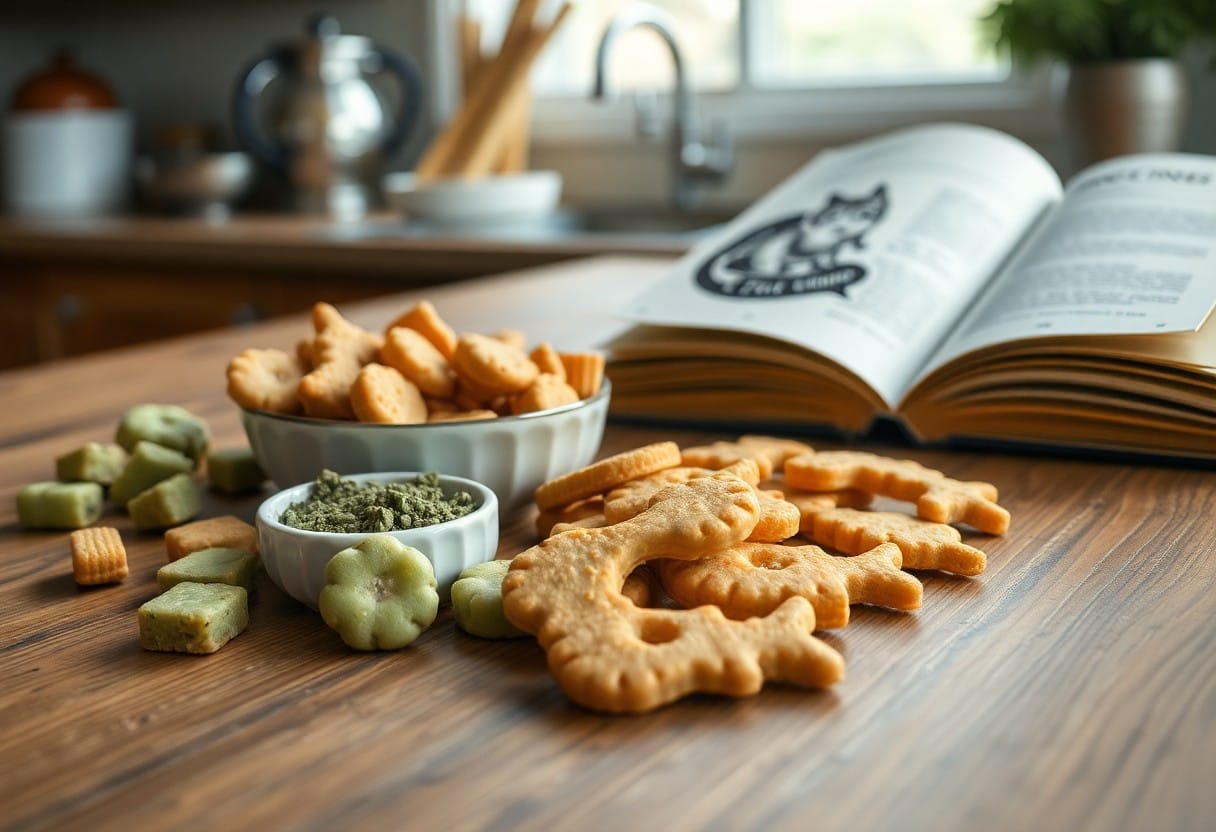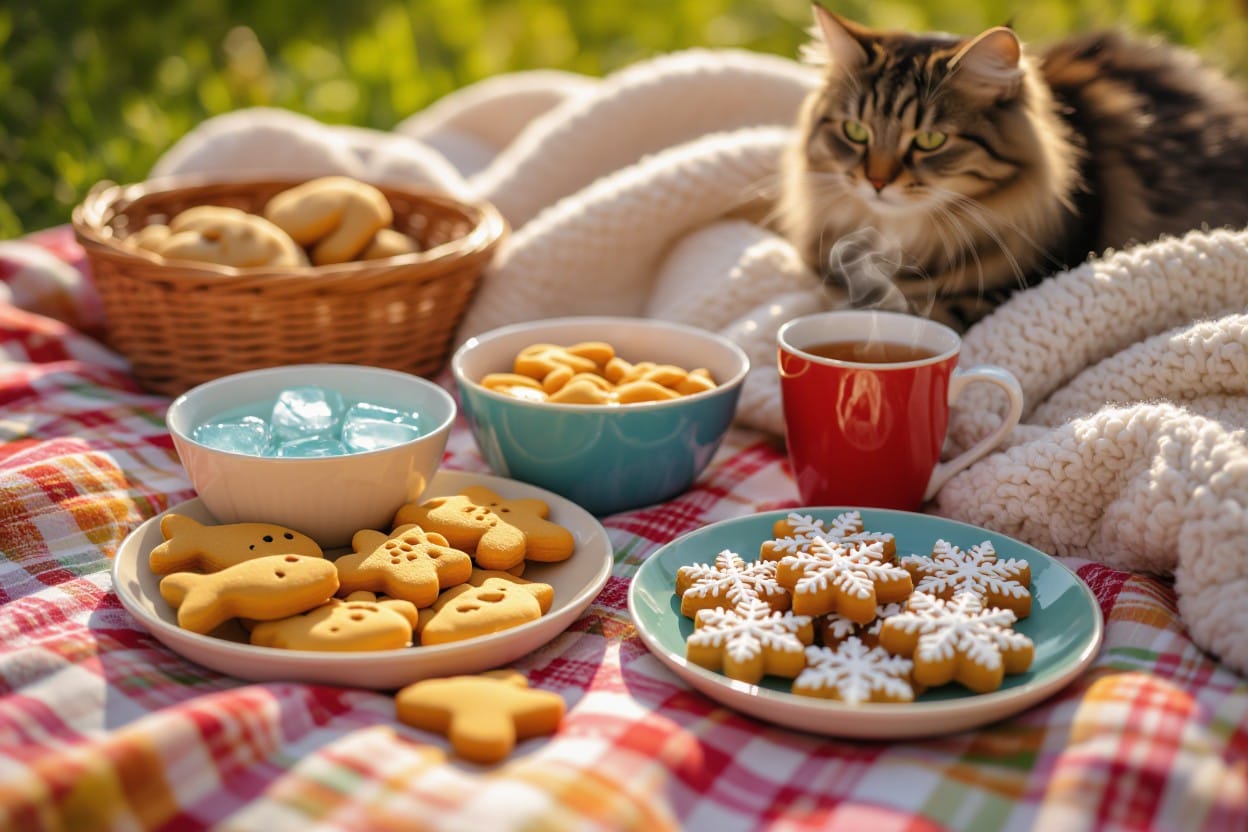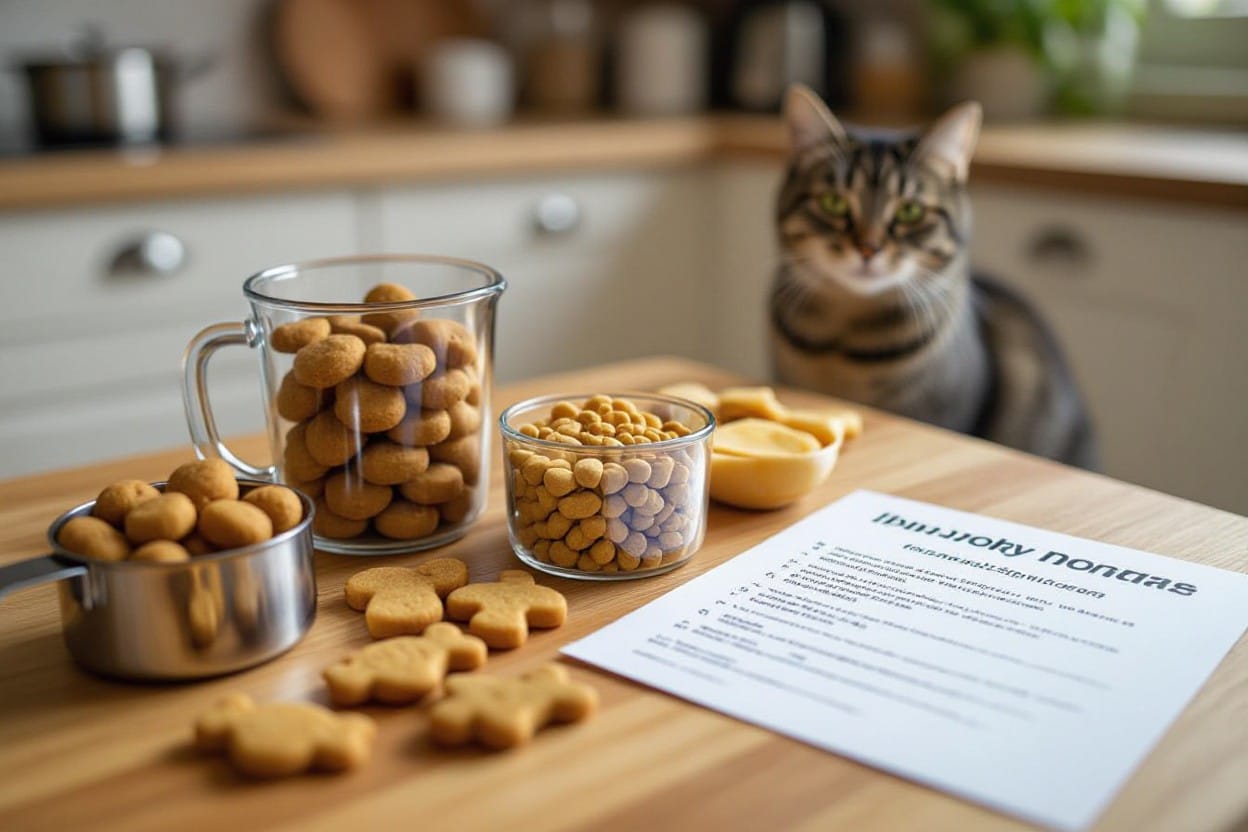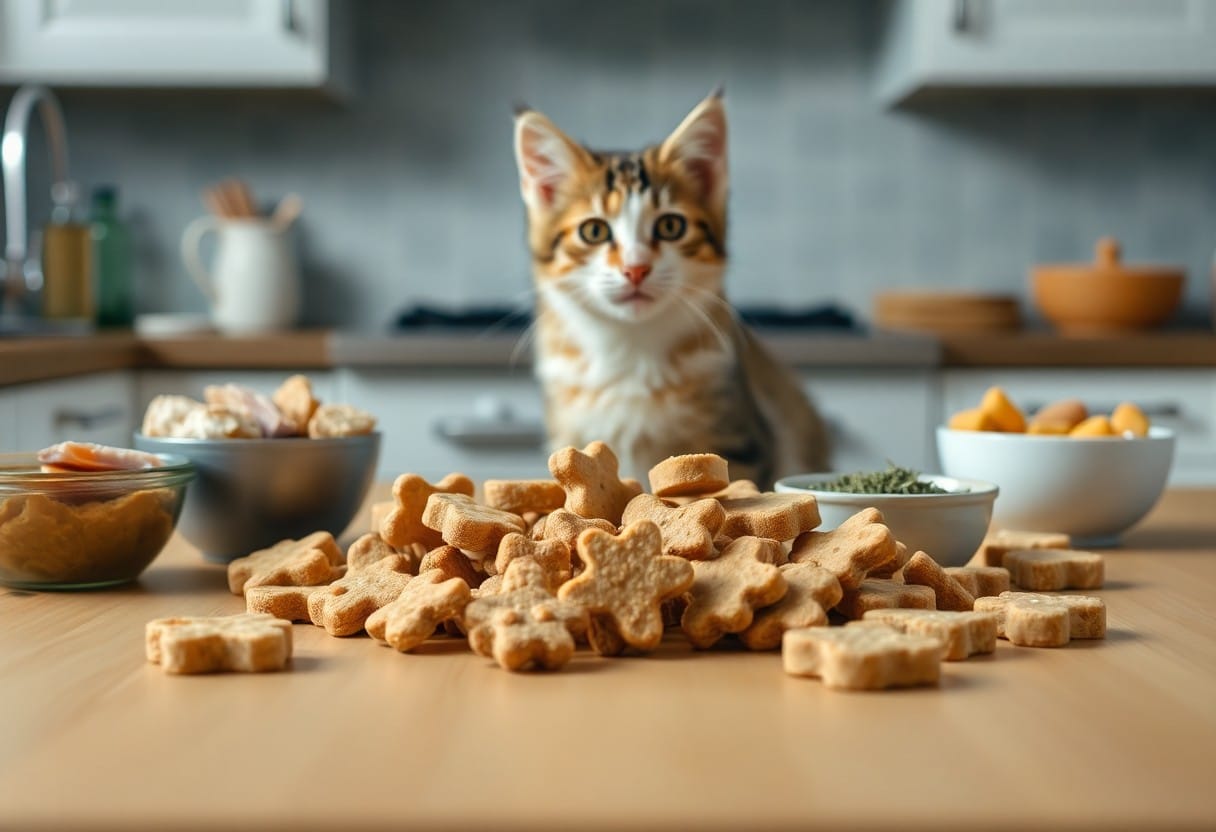Just as you prioritize your own health, your cat’s well-being deserves the same attention, especially when it comes to treats. By crafting homemade cat treats, you can avoid harmful additives and control the quality of ingredients, making their snacks both safe and nutritious. In this post, you’ll discover delicious recipes that not only satisfy your feline’s taste buds but also contribute to their overall health. Get ready to transform your kitchen into a cat-friendly haven of wellness with these easy, homemade delights!
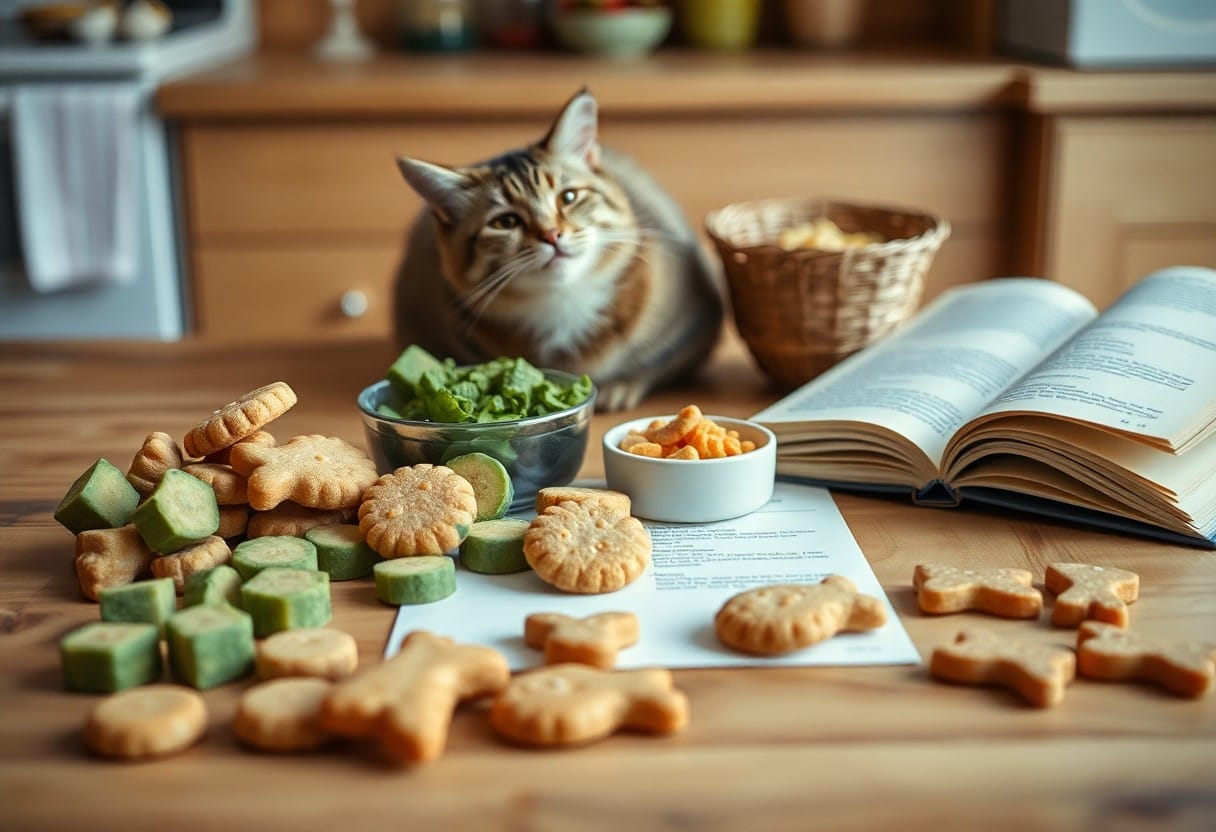
Key Takeaways:
- Homemade cat treats can be tailored to meet specific dietary needs, promoting overall health and wellbeing in your feline friend.
- Incorporating wholesome ingredients like fish, chicken, and organic vegetables enhances the nutritional value of the treats.
- Regularly preparing cat treats at home can foster a stronger bond with your pet, while controlling the ingredients and avoiding preservatives commonly found in store-bought options.
The Nutritional Foundation of Cat Treats
Building your cat’s health and wellness starts with understanding what goes into their treats. A balanced diet for felines should be grounded in high-quality ingredients that provide necessary nutrients. Developing homemade cat treats allows you to craft snacks that are not only delicious but also nutritionally beneficial. Integrating fresh proteins, healthy fats, and necessary vitamins into their treats ensures they enjoy tasty rewards while promoting overall vitality.
Essential Ingredients for Feline Health
High-quality proteins such as chicken, fish, and turkey serve as the backbone of homemade cat treats, providing the amino acids necessary for muscle maintenance and energy. Incorporating omega-3 fatty acids from fish oil or flaxseed contributes to healthier skin and fur. Additionally, vitamins like A, B, and E support immune function and overall wellness, while small amounts of fiber from pumpkin or sweet potato can aid digestion, making these ingredients vital for your cat’s health.
The Role of Macros and Micros in Your Cat’s Diet
Each cat has specific dietary requirements that reflect in the composition of macros and micros. Macronutrients—proteins, fats, and carbohydrates—are necessary for energy and overall growth, while micronutrients—vitamins and minerals—keep bodily functions running smoothly. Understanding the proper balance for your feline friend ensures they’ll thrive. Cats are obligate carnivores, so their diet should be primarily protein, with appropriate fat levels and minimal carbohydrates to maintain their health and support their active lifestyle.
For instance, a cat’s protein needs typically lie between 30% to 40% of their overall diet, reflecting their nature as predators. Fats should comprise around 20% and carbohydrates limited to 5% to 10%, ensuring you replicate a more natural intake. Micronutrients such as taurine, an amino acid found in meat, are particularly vital for feline health, influencing heart function, eyesight, and reproductive health. Adjusting your homemade cat treats allows you to fine-tune these nutrients, meeting your cat’s specific needs and preferences.
Crafting Wholesome Treats at Home
Creating homemade cat treats allows you to carefully control the ingredients, ensuring they are both nutritious and tailored to your cat’s needs. Simple preparations, like baking or dehydrating, are excellent methods to lock in flavors and important nutrients. Focus on incorporating fresh ingredients that provide health benefits, such as pumpkin for fiber or chicken for protein. With a little creativity and experimentation in your kitchen, you can whip up delightful treats that your feline friend will adore while promoting their overall wellness.
Key Techniques for Preparation and Storage
Effective preparation starts with using fresh, high-quality ingredients, which can significantly enhance the flavor profile and nutrients in your treats. Always follow specific recipe steps to ensure consistency and safety. Once prepared, allow treats to cool completely before storing them in an airtight container, which keeps them fresh and prevents spoilage. Make sure to label containers with dates to track their freshness and rotate stock regularly, as homemade treats typically have a shorter shelf life than store-bought options.
Popular Recipes for Wellness-Oriented Cat Treats
Finding popular recipes for wellness-oriented cat treats can simplify your cooking process while ensuring your cat receives tailored nutrition. You might want to try chicken and sweet potato biscuits packed with protein and antioxidants or tuna and oat bites that are both tasty and easy to digest. Another fun option involves pumpkin and flaxseed treats that contribute to digestive health. Each recipe is designed not just for flavor but to support various health aspects important to your cat’s wellbeing.
For instance, the chicken and sweet potato biscuits incorporate lean protein and beta-carotene, fostering healthy skin and fur while being appealing to your cat’s palate. The tuna and oat bites, enriched with omega-3 fatty acids, promote heart health and support a shiny coat. If your cat struggles with digestion, pumpkin and flaxseed treats work wonders, providing fiber that aids in a healthy digestive system. By choosing ingredients with specific health benefits, you’ll be crafting treats that your pet loves and that help keep them healthy.
Tailoring Treats to Specific Health Needs
Crafting homemade treats allows you to address specific health concerns for your cat, ensuring their unique dietary needs are met. You can adjust ingredients to aid in weight management, skin and coat health, and even digestive wellness. Ensuring your furry friend enjoys tasty rewards that also contribute to their overall well-being is simple when you know exactly what to include. Tailoring treats with the right selections can bring about positive changes in their day-to-day vitality.
Treats for Weight Management
Finding the right balance in calories for your cat’s treats can significantly contribute to weight management. Incorporate ingredients like pumpkin and sweet potatoes that are low in calories but high in fiber. This will help keep your cat full while maintaining a healthy weight. Consider mixing these with small amounts of lean protein sources, like shredded chicken or fish, to create satisfying bites that won’t pack on the pounds.
Natural Solutions for Skin and Coat Care
To enhance your cat’s skin and coat, consider treats enriched with fatty acids, like omega-3 and omega-6. Ingredients such as salmon oil or flaxseeds are fantastic for promoting a lustrous coat and healthy skin. Additionally, adding a small amount of pumpkin puree can further support skin health, as it contains vitamin A. Experimenting with these components can make a noticeable difference in your cat’s appearance and comfort.
Incorporate treats specifically designed for skin and coat care by using a blend of omega-rich oils and proteins. For instance, create a simple treat using canned sardines packed in water, mixed with ground flaxseed, and a touch of oat flour to bind. Bake them until firm and let your cat experience the joy of a nutritious snack. These omega-boosting treats can reduce shedding and itchiness, making your cat feel more comfortable while enhancing their overall coat quality.
The Science of Flavor: Making Treats Irresistible
Creating cat treats that your feline will eagerly devour requires an understanding of flavor dynamics. Cats possess a keen sense of smell, which significantly influences their taste preferences. By utilizing aromatic ingredients like catnip, chicken broth, or tuna, you can elevate the flavor profile and entice your cat’s palate. The right balance of textures and tastes—crunchy, chewy, or meaty—can further enhance the appeal, making those homemade treats not only a reward but a delightful experience for your furry friend.
Combining Ingredients for Appeal
Crafting irresistible cat treats involves strategically combining flavors that harmonize well. For instance, pairing protein-rich chicken or fish with wholesome grains like oat flour or rice flour creates a balanced and tempting texture. Adding a hint of catnip or a sprinkle of cheese not only boosts the flavor but also captures your cat’s attention. Experimenting with different combinations can lead to surprisingly delightful discoveries.
Understanding Feline Taste Preferences
Felines exhibit distinct taste preferences that guide your treat formulations. Cats are obligate carnivores, meaning their taste buds are finely tuned to savor protein sources. They lack the receptors for sweetness but are attracted to the umami flavor, which is prevalent in meats and certain broths. Including ingredients such as salmon, chicken, or turkey not only aligns with their natural cravings but also ensures your treats are packed with the nutrients they need.
Understanding that cats generally have a preference for salty and savory flavors can influence your recipe choices. Felines often gravitate toward the taste of meat, as it mimics their natural diet. To appeal to their taste significantly, incorporating savory proteins along with a touch of fat can heighten their interest. You might also experiment with the intensity of flavors, as some cats may prefer a subtler taste while others may revel in bold flavors. Observing your cat’s reactions to different treats will help refine your approach, ensuring each treat is met with enthusiastic purrs.
Keeping Your Cat Engaged: Innovative Presentation Ideas
Engaging your feline friend with homemade treats can transform snack time into an adventure. By thinking outside the cookie jar, you can create visually appealing and interactive experiences that pique your cat’s curiosity. From layering treats in a puzzle feeder to arranging them in fun shapes, a little creativity goes a long way in keeping your kitty entertained. Experiment with different textures and colors, and watch as your cat eagerly explores these delightful creations.
Fun Ways to Serve Homemade Treats
Serving homemade treats in a playful manner can make all the difference. Consider using small silicone molds to create unique shapes like fish, birds, or even hearts. This not only adds an element of surprise but also taps into your cat’s sense of play. You might also try hiding treats within crumpled paper or within a treat-hiding ball, turning their snack time into a stimulating scavenger hunt that calls for their natural hunting instincts.
Incorporating Treats into Enrichment Activities
Using your homemade treats as part of enrichment activities enhances your cat’s mental and physical well-being. These activities can be simple yet effective, such as breaking up the larger treat batches and scattering them around your home. Alternatively, you could set up interactive games like ‘treat toss’ where you throw small bites for your cat to chase, thus promoting exercise and engagement. Interactive treat puzzles encourage problem-solving and can help in keeping your cat sharp and entertained.
To investigate deeper into enrichment activities, consider crafting DIY treat puzzle toys from everyday items like cardboard boxes or clean plastic bottles. For instance, you could cut holes into the sides of a plastic bottle, fill it with your homemade treats, and let your cat figure out how to roll it around to retrieve their rewards. This not only provides mental stimulation but also encourages physical movement, which is imperative for cats that may not get enough exercise indoors. Always tailor the complexity to your cat’s abilities to ensure they remain challenged but not frustrated.
Summing up
The best homemade cat treats can significantly enhance your feline friend’s health and well-being. By crafting nutritional delights tailored to your cat’s needs, you can provide them with better ingredients and flavors that store-bought options often lack. Experimenting with recipes allows you to bond with your pet while ensuring they enjoy wholesome snacks. Embrace this rewarding journey and watch your cat thrive with the love and care you invest in their diet.
Q: Why should I make homemade cat treats instead of buying store-bought options?
A: Making homemade cat treats offers several advantages. First, you have full control over the ingredients, allowing you to choose high-quality, nutritious components that cater to your cat’s dietary needs. Many store-bought treats contain preservatives and fillers that might not be ideal for your furry friend. Additionally, crafting treats at home can be a fun activity that strengthens your bond with your cat, as you can customize flavors and shapes to match their preferences.
Q: What ingredients are best for crafting healthy cat treats?
A: The best ingredients for homemade cat treats include protein sources such as cooked chicken, turkey, or fish, which are appealing to cats. Incorporating healthy grains like oats or brown rice can provide energy. Also, consider adding small amounts of vegetables like pumpkin or carrots for added fiber and nutrients. It’s imperative to avoid common harmful ingredients such as onions, garlic, and chocolate. Always research specific ingredients to ensure they are safe for your pet.
Q: How can I ensure my homemade cat treats are safe and nutritious?
A: To ensure your homemade cat treats are safe and nutritious, start by researching and selecting recipes from reliable sources. Always use fresh, high-quality ingredients and keep your kitchen tools clean to prevent contamination. It’s a good idea to consult with a veterinarian before introducing new treats into your cat’s diet, especially if your cat has specific health concerns or dietary restrictions. Additionally, monitor your cat’s reaction to new treats and adjust the ingredients or quantities accordingly.
